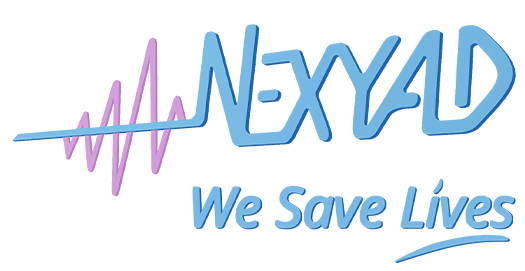NEXYAD Automotive & Transportation Newsletter #4, the 7th of September 2015
Validation database for camera-based ADAS
The company
NEXYAD started building a database for validation of advanced driver assistance systems (ADAS and Autonomous car) using the methodology AGENDA published in the 90 by Gérard Yahiaoui (methodology initially developped for control construction of learning and test databases for the implementation of artificial neural networks).
This database has two essential characteristics:
1) Known life situations
Indeed, the methodology AGENDA proposes to describe potential changes of signals and images came into factors of variability and their crosses.
Example, for obstacle detection :
. weather (dry overcast, sunny weather, rain, fog)
. overall brightness (low, medium, high)
. speed of the carrier vehicle (low, moderate, high)
. type of road (highway, road with marking, road without marking …)
. coating (bitumen 1, bitumen 2, …, cobblestones)
. day / night (headlights and the lights switched infrastructure)
. season (spring, summer, autumn, winter)
. etc …
> type of obstacle :
– stopped
. infrastructure-related: work terminals, tolls, …
. related users: tire on the road, parcel felt from a truck lying on the road, biker following a road accident, disabled vehicle stopped on the floor, standing pedestrian on roadside edge (dodger / no sniper)
– moving
. truck, car, vulnerable (pedestrian, bicycle, motorcycle) each with types trajectories (longitudinal
in rolling direction, longitudinally in the opposite direction of rolling side) and position (opposite
to right, left).
. Etc…
We see that if we cross these factors, we find fairly quickly a huge number of cases. However, the development of ADAS systems is complex, and it is necessary to proceed by successive iterations, starting from simple situations to move to complicated situations.
Our database allows this, since all records are described in terms of crossing the terms of the factors of variability. Thus knows exactly which cases were tested or not by the system.
Formalism ‘crossing of variability factors of the terms’ allows using design of experiments, and in particular orthogonal fractional plans to sharply reduce the number of cases to be tested while ensuring maximum coverage of life situations. One can in this context to develop a fractional ADAS on an orthogonal plan and test other hard fractional orthogonal planes for example.
2) Reality reference
This is to crop images barriers and infrastructure elements (markings, roadsides, etc.) so as to constitute a reference to measure system performance.
. Examples of life situations:

1.1, summer, overcast, unmarked road, moderate speed tire on the floor, dry weather
1.2, summer, overcast, unmarked road, moderate speed, parcels on the floor, dry weather
2.1, summer, overcast , unmarked road, moderate speed, standing pedestrians non ambush at the edges of the floor, dry weather
2.2, summer, overcast, unmarked road, moderate speed, lying on the floor human, dry weather
etc …
Not sure that you would meet those few cases, even with on million kilometers on open roads.
Our Goal
NEXYAD starts his collection of images and data:
. video (towards the front of the vehicle) Color
. accelerometers
. gyros
The files are synchronized by RT-MAPS tool INTEMPORA society.
The files are saved as RT-MAPS format and replayable directly by this tool.
NEXYAD currently looking for contributors on this internal project. Co contributors fund and in return free access to the database, unlimited in time. This contribution will accelerate the work of collecting and labeling.
NEXYAD wishes to provide this basis before June 2016, free way to give the material to the community and the ADAS autonomous vehicle for a smaller version of the database, and pay way (as subscriptions) for complete database.
NEXYAD’s ambition is to spread its methodological expertise and allow everyone to assess the performance of vision systems for ADAS, whether systems developed by NEXYAD, or others.
References
“Methodology for ADAS Validation: Potential Contribution of Other Scientific Fields Which Have Already Answered the Same Questions”, Gérard Yahiaoui, Pierre Da Silva Dias, CESA congress Dec 2014, Paris, proc. Springer Verlag
“Methods and tools for ADAS validation”, Gérard Yahiaoui, Nicolas du Lac, Safetyweek congress, May 2015, Aschaffenburg
Contact
For questions, or if you wish to become a contributor, please contact NEXYAD : +33 139041360
*****
Road detection for ADAS and autonomous vehicle :
NEXYAD module RoadNex V2.1
A useful complement to markings detection
The detection of the road is a key element of driver assistance systems (ADAS) and autonomous vehicles.
Indeed, objects, obstacles, other road users, must be detected but also positioned relatively to the road.
The detection of the entire route, that is to say not only its markings or edges, but all the way, should enable
embedded intelligence to select appropriate action.
The company NEXYAD has been working on this issue for over 20 years without interruption, and has accumulated a large number of cases of road types, of coatings, in various atmospheric conditions.
This is to detect the rollable area on the road, without regard to, in a first step, lane markings.
Indeed, in Europe, there are many unmarked roads, and work on a marked road may change the markings and
make a « follow the markings strategy » dangerous.
In the images below you can see on the left a typical French countryside road with no markings, and on the right image, new markings was achieved while former markings still strongly visible.


These cases are quite common on our European roads and a driver assistance system, or a driving delegation
system, must at least understand such cases and if necessary tell the driver to cope with it by himself.
The NEXYAD road detection module, RoadNex V2.1 is a brick to go further to cope with these cases :

RoadNex V2.1 should be coupled with road signs detection, road markings detection, obstacle detection, in order to build an intelligent perception system. RoadNex is then a key module of such a system.
The road detection module NEXYAD, RoadNex V2.1 is available as a component into the asynchronous real time framework RT-MAPS : See HERE
*****
Road Safety for ADAS and autonomous vehicle :
NEXYAD module SafetyNex running as real-time component
of Framework RT-Maps
SafetyNex (safety level estimation for ADAS)
SafetyNex Onboard is a high level functional bloc (software) of safety measurement, taking into account map and GPS geolocation (shape of the road, crossing roads, … ahead), speed, accelerations, visibility, adherence, distance to obstacle, etc.
SafetyNex measures adaptation of the driving style to infrastructure topology, and possibly Dangerous situations.
Two main applications :
_ Car industry : intelligent Navigation system providing valuable advices to keep the car in a good level of safety; sending alarms on dangers
_ Insurance : driving style measurment correlated with accidentology (insurance pricing, Pay How You Drive)
SafetyNex is now running in RT-Maps by IMTEMPORA
SafetyNex is under fusion with Ecogyzer (eco driving rating system) : this “package” will be the ultimate tool for eco and safe driving combination.

SafetyNex v2.1




















